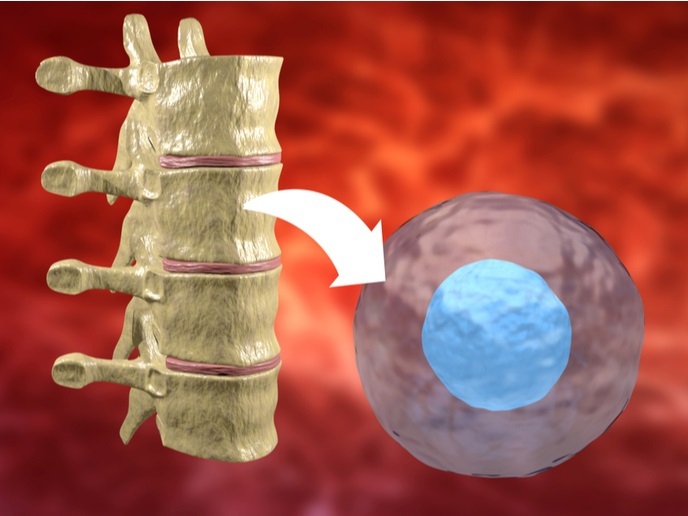Getting the niche right for survival of human stem cells
Haematopoietic stem cells(opens in new window) (HSCs), a type of bone marrow stem cells, cannot be induced to reproduce in vitro. In their natural site, bone marrow, they live in a microenvironment known as a niche that maintains them in a ‘resting’ state until prompted to differentiate into different blood cells. This environment provides them with nutrients and support. In certain circumstances where the HSCs have a target cell to differentiate towards, the correct ‘cocktail’ of regulatory factors and the environmental and mechanical signals arising from the extracellular matrix are crucial regulators of stem cell fate.
Construction of artificial stem cell niches
The MicroNICHE(opens in new window) project was conceived as a tool to build artificial HSC niches harnessing microfluidic techniques. Microfluidic devices exploit the physical and chemical properties of liquids and gases at microscale. Pilar Carreras, the Marie Skłodowska Curie fellow explains: “In order to maintain and expand human bone marrow haematopoietic stem cells, and to implement further translation of the cells into functional ex-vivo cultured cells, we had to engineer a biomimetic 3D microenvironment.” The next step was to develop artificial microniches with key reconstructed functional features. “In this project we used the advantages that high throughput microfluidic technology offers, in particular droplet based microfluidics(opens in new window),” adds Carreras.
From individual stem cells to differentiated cells
The initial objective was to maintain the cells for at least 78 h to demonstrate the ability of building a suitable environment for the encapsulation and culture of human HSCs (hHSCs). “However, we observed microniches able to maintain and expand hHSCs for up to 8 weeks without the use of complex culture technologies or additives in the culture media,” emphasises Carreras. To arrive at an idea of levels of ‘stemness’ and potential for differentiation into other possible cells, scientists cultured patient derived cells in droplets for a week. “We observed that the great majority of the enclosed cells remained stem, with very small subpopulations of differentiated cells. This suggests that most of the ex vivo maintained hHSCs cultured with the high-throughput microfluidic technology remain in their original stem state and can be cultured and expanded in the long term,” notes Carreras. Microniche technology also gave rise to long term hHSC survival and expansion by enclosing these cells in an onion like hydrogel structure with supporting human mesenchymal stem cells (hMSCs) for 8 weeks. Carreras comments on the significance of this breakthrough as, “representing an opportunity to provide significant improvements in progenitor cell transplants, as well as a tool to study the biochemical and biophysical factors influencing stem cell behaviour.”
Addressing challenges and bridging research gaps
Challenges arose, manageable due to team support in the collaborating lab of Dr. Joaquin Martinez-Lopez (Haematology Department, Hospital 12 Octubre, Madrid). A change in the material used for the designed microfluidic device was necessary to allow for fine tuning its features. Later, the challenging 3D imaging of the enclosed cells was successfully addressed by designing several cell tests for the cultured beads under confocal microscopy. Carreras concludes: “This technology opens a myriad of new applications as a universal stem cell niche model potentially able to expand to other types of cells.” She further highlights the importance of microfluidics applications in life sciences and the need to bridge the gap between this kind of research and hospitals and patients, as much more valuable and efficient outcomes can emerge from working next to the patient.







